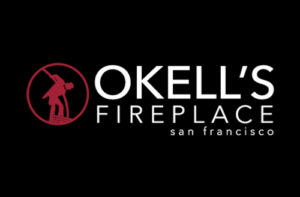In the free enterprise system, competition selects out businesses that don’t adapt to change or events they can’t plan on. To thrive within this system, your decorative concrete business must maintain a high degree of flexibility.
One of the very few certainties of operating a decorative concrete business is that your business plan will NOT describe what actually happens. I know. Bummer. Of course, this doesn’t mean you should shirk the task of developing a business plan. Just remember that all the planning, projecting and preparing you do will NOT eliminate those unplannable events that will make your business environment unpredictable.
This is why being flexible is so important. It will enable you to protect yourself against the two types of unplannable events by minimizing uncertainty and reducing ambiguity.
Minimizing uncertainty
Uncertainty is knowing that an event will occur, but not knowing the timing (when) or the magnitude (how much). For example, you can assume your suppliers will eventually raise their prices, but you don’t know when or by how much. And you know imitators and substitutes will try to appropriate your hard-earned business value, but you don’t know when or in what specific way.
In 1789, Benjamin Franklin wrote to Jean-Baptiste Le Roy, “In this world nothing can be said to be certain, except death and taxes.” There are two types of “death” events in a decorative concrete business: the untimely death of a key employee, such as an experienced product installer, and events that obliterate your business, such as embezzlement. As for taxes, many types of those are uncertain only in their amounts, not if or when they are due.
Fortunately, uncertainty can be managed and minimized using risk management strategies. The risk management possibilities for death and taxes are, respectively, insurance and advanced tax planning.
Minimize the damage to your business caused by the death of a critical employee by acquiring key person insurance. Imagine how difficult it would be to overcome the loss of a key technical employee in whom you invested so many resources. I’m talking about that guy on your team who knows more about your decorative products than anyone else. Or perhaps it’s the salesperson who drives your revenue. Regardless, it’s the employee your business can’t survive without. The policy must be large enough to ensure that a viable replacement can be found and the damage can be repaired. This can be a relatively inexpensive solution compared to the cost of not having it in a time of need.
Catastrophic insurance helps when major catastrophes threaten to obliterate your business: product liability, embezzlement, riots, fires, earthquakes. The list goes on. Are these events unlikely? Perhaps, but they happen. And when they do, they will deal such a severe blow to your business that you may not recover. Remember the Los Angeles riots of 1992? Reportedly, none of the affected businesses had catastrophic insurance and only 30 percent reopened after the damage was done.
Advance planning for taxes due may require professional tax counsel. But it will help you avoid cycles of forced compliance, which will distract your attention from more productive uses of your time. Advance tax planning means knowing the likely types of taxes you will owe. It means estimating them on an ongoing basis. It means setting your bid prices so you can hit your profit targets after taxes. And it means setting aside cash so you can match tax liabilities as they build throughout the year.
Reducing ambiguity
Ambiguity is the other category for all other unplannable events. If uncertainty is knowing an event will occur but not knowing for sure, ambiguity is simply not knowing at all. Not only are you unaware of the magnitude or timing of an event, you don’t even know the nature of the event itself. The bad news is that ambiguity is virtually infinite and its management is almost impossible.
It’s a common belief that if your business is small and agile, you can be more flexible. While there is some truth to this, it isn’t always the case. Population ecologists teach that the characteristics of your decorative concrete business at or near the time of its founding will vary little over its life because of “inertia.” For example, once you develop a reputation with your customers for a specific service or product, it will require even more effort and investment to retrain your customers to think of you in a different way. For example, if you’re known as “the stain guys,” how do you think your customers will respond if you start promoting yourself as “the polishing guys”? They probably won’t respond at all. At least, not at first. That kind of adjustment takes time. And in this way, inertia can be tyrannical.
Therefore, reducing ambiguity involves both luck and dealing with the “tyranny of inertia” through heterogeneity and appropriate decision-making structure.
Heterogeneity is when you leverage the collective mind of many employees of your business. The challenge is to use their individual strengths collectively to overcome the tyranny of inertia. In times of calm, the collective mind that works best is homogenous —everyone has similar backgrounds or thinks along the same lines. However, in times of economic turbulence (like the current economy) heterogeneous businesses are better equipped to resist economic pressures that select out weak decorative concrete businesses.
Establish or develop heterogeneity in your business by tolerating and fostering independent thinking and individualism (and the resulting disagreements) so your business can be more responsive to ambiguity.
“But, Jacob,” you say, “how do I establish heterogeneity if I’m the only employee of my small decorative concrete business?” Great question. You still need to infuse a collective intelligence in your decision-making by organizing and relying on a board of advisors. These may be (paid or unpaid) industry experts, service providers or other professionals. Regardless, multiple heads will be better than one if you are to respond to ambiguous events that could threaten your business.
Here’s what I mean by decision-making structure: Decisions involving low ambiguity should be made by employees who can refer to established procedures and policies for guidance. When should we pick up the mail? How often should we replace the water cooler? You shouldn’t have to call your board of advisors to answer these questions.
Likewise, decisions that are increasingly ambiguous will be better made through group processes that decrease in structure as ambiguity increases. How should we position ourselves against the competition? What market should we target? Answering these questions necessitate a higher-level heterogeneous group somewhere in your decision structure.
Tips for Improving Your Company’s Flexibility
• Develop a business plan knowing you must ultimately be flexible when your plan does not pan out.
• Acquire key person insurance to minimize the potential damage to your business from the death of an essential employee.
• Consider investing in catastrophic insurance, which can help when major catastrophes threaten to obliterate your business.
• Advance planning for taxes due may require professional tax counsel. But it will help you avoid cycles of forced compliance, which distracts your attention from more productive uses of your time.
• Identify and organize a management team or Board of Advisors with diverse backgrounds, experiences and education so you can benefit from a collective, heterogeneous intelligence.
• Establish policies and procedures within your decision structure to help low-level employees answer less ambiguous questions such as, “How often should I check the pressure washer for gas?”















